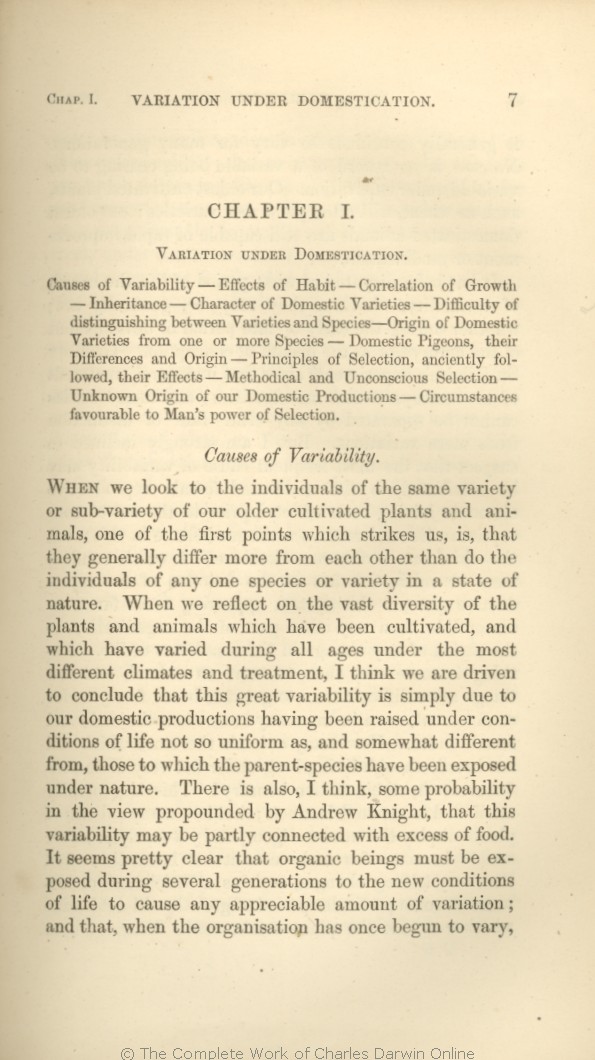|
CHAPTER I. |
| VARIATION UNDER DOMESTICATION. |
Causes of Variability— Effects of
Habit— Correlation of Growth— | Habit— Correlation of Growth— 1859 1860 1861 1866 |
| Habit— Correlated Variation— 1869 |
| Habit and the use or disuse of Parts— Correlated Variation— 1872 |
| Principles 1866 1869 1872 | | Principle 1859 1860 1861 |
| Selection, 1866 1869 1872 | | Selection 1859 1860 1861 |
| their 1866 1869 1872 | | its 1859 1860 1861 |
|
|
Causes
of
Variability.
|
WHEN we
look to | look to 1859 1860 1861 1866 | | compare 1869 1872 |
| us, 1859 1860 1861 1866 | | us 1869 1872 |
| more 1860 1861 1866 1872 | | much more 1859 | more 1869 |
| other 1860 1861 1866 1869 1872 | | other, 1859 |
| than 1859 1860 1861 1866 1872 | | more than 1869 |
| When 1859 1860 1861 1866 | | And if 1869 1872 |
| I think 1859 1860 1861 1866 | I think 1869 1872 |
| great 1860 1861 1866 1869 1872 | | greater 1859 |
| simply 1859 1860 1861 1866 | simply 1869 1872 |
| have 1859 1860 1861 1866 | | had 1869 1872 |
| is 1860 1861 1866 1869 | | is, 1859 1872 |
| I think, 1859 1860 1861 1866 1869 | I think, 1872 |
| pretty 1859 1860 1861 1866 | pretty 1869 1872 |
| the 1859 1860 1861 1866 | the 1869 1872 |
| of life 1859 1860 1861 1866 | of life 1869 1872 |
| appreciable 1859 1860 1861 1866 1869 | | great 1872 |
| that, 1866 1869 1872 | | that 1859 1860 1861 |
|









